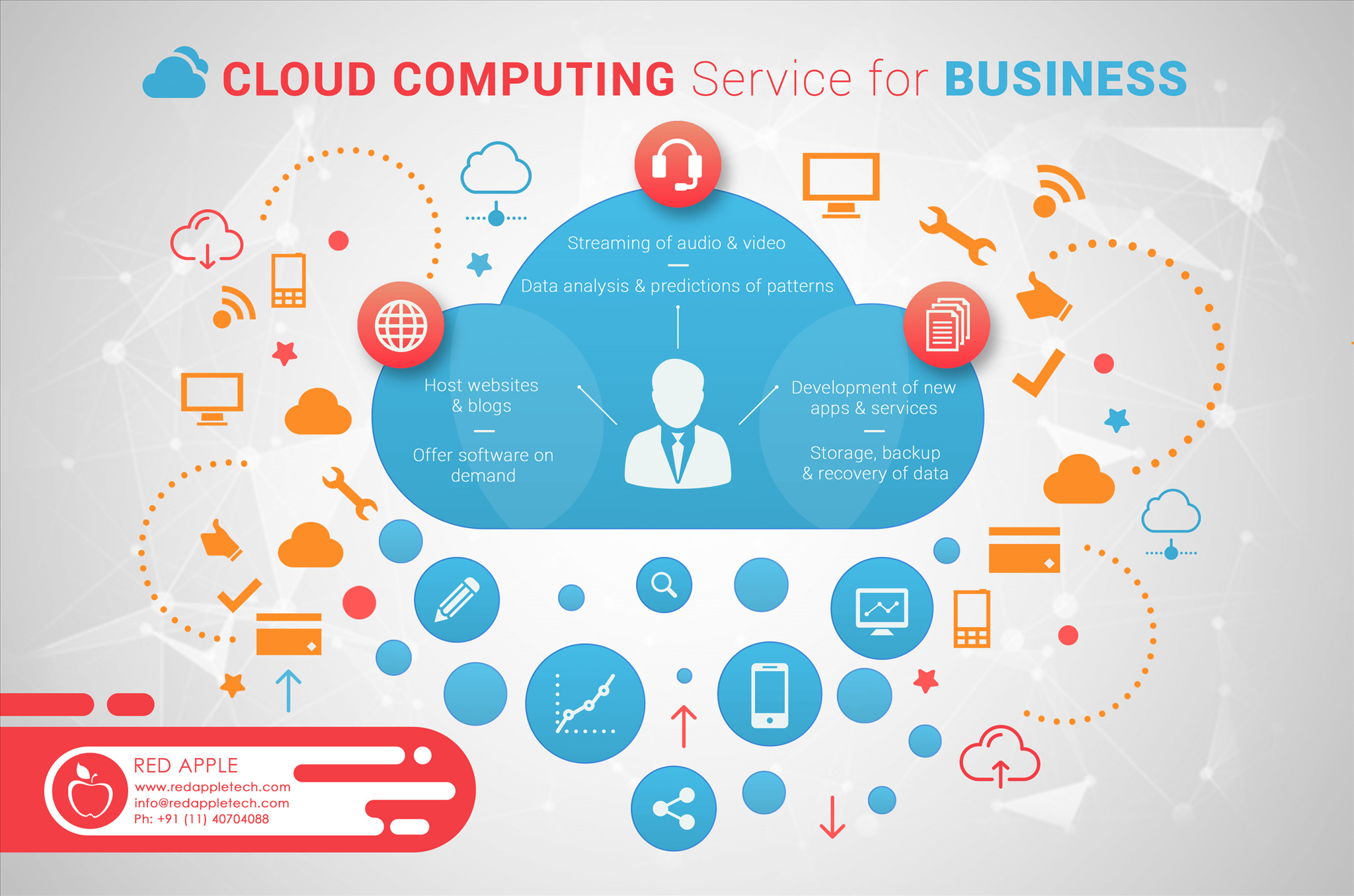LinkDaddy Cloud Services Proficiency: Advanced Methods for Effective Cloud Services Press Release
LinkDaddy Cloud Services Proficiency: Advanced Methods for Effective Cloud Services Press Release
Blog Article
Simplify Your Facilities With Cloud Solutions
As businesses browse the ever-evolving landscape of technology and data monitoring, the function of cloud solutions in streamlining infrastructure has actually become progressively popular. Exactly how can companies successfully browse this change and genuinely open the capacity of cloud solutions for streamlining their infrastructure?
Benefits of Cloud Solutions
Cloud solutions offer a structured strategy to handling IT framework, giving organizations with versatility, scalability, and cost-efficiency. One of the essential benefits of cloud solutions is the scalability they supply.
Furthermore, cloud solutions eliminate the need for services to buy expensive software and hardware. This cost-efficiency is a considerable advantage, particularly for little to medium-sized enterprises looking to reduce ahead of time prices. By utilizing cloud solutions, organizations can access top notch IT sources without the large cost connected with standard infrastructure arrangements.
Furthermore, cloud solutions provide organizations with the adaptability to access their information and applications from anywhere with an internet connection. This degree of accessibility improves partnership among teams, enables remote work, and boosts total efficiency. The flexibility provided by cloud services equips companies to adapt swiftly to transforming market conditions and client demands.
Cost Cost Savings and Scalability
In enhancement to the operational benefits highlighted earlier, the combination of cloud solutions right into a company's facilities generates considerable price financial savings and boosted scalability. Cloud solutions provide a pay-as-you-go version, permitting organizations to range resources up or down based on present requirements, thus preventing the prices connected with maintaining excess capacity. This versatility makes it possible for companies to adapt rapidly to changing needs without sustaining unnecessary costs.
Additionally, cloud solutions remove the demand for in advance financial investments in equipment and software, reducing capital expenses. Operating budget are also minimized as firms no more need to manage and preserve physical servers, bring about lower power intake and IT staffing costs. Furthermore, cloud services offer automatic updates and maintenance, guaranteeing that the framework stays protected and current without calling for hand-operated interventions.
Improved Safety Actions
Applying strict security actions is extremely important when integrating cloud services right into a business's infrastructure to safeguard delicate information and make certain compliance with sector regulations. Cloud provider supply enhanced safety and security attributes such as information security, firewall program defense, and multi-factor authentication to reduce cybersecurity risks. File encryption helps protect information both at remainder and en route, guaranteeing that only authorized customers can access delicate information. Firewall softwares work as an obstacle in between interior networks and external threats, tracking and controlling inbound and outward bound network traffic. Multi-factor verification adds an extra layer of safety by requiring customers to supply numerous kinds of confirmation before accessing the cloud services.
Furthermore, normal protection audits and compliance evaluations help recognize susceptabilities and make sure adherence to industry criteria. Companies can also take advantage of functions like automated safety updates and real-time hazard tracking given by cloud company. By prioritizing protection procedures and remaining positive in dealing with possible risks, organizations can with confidence take advantage of cloud services while securing their valuable information from unauthorized accessibility or breaches.
Transitioning to Cloud Facilities
To successfully incorporate cloud services right into official statement a company's facilities, an organized technique that deals with the change in the direction of cloud-based options is imperative. Transitioning to cloud infrastructure entails careful planning and implementation to ensure a smooth movement process. The very first step is to assess the existing infrastructure and figure out which systems and applications are appropriate for movement to the cloud. This analysis should think about variables such as information sensitivity, compliance demands, and efficiency needs.
As soon as the assessment is complete, a movement strategy must be established. This strategy needs to lay out the timeline, sources, and obligations for relocating each part to the cloud. It is necessary to communicate this plan plainly to all stakeholders to ensure alignment and reduce disruptions throughout the change.
Throughout the movement testing, procedure and surveillance are crucial to identify and address any kind of problems promptly. Regular checkpoints should be developed to track progress and make essential adjustments. Furthermore, training for employees on making use of cloud services need to be provided to ensure an effective shift and make best use of the advantages of the brand-new infrastructure.
Ideal Practices for Cloud Adoption
Effective fostering of cloud services pivots on the strategic positioning of service goals with technical capabilities and business preparedness. To make sure a smooth transition to the cloud, organizations should begin by carrying out a comprehensive evaluation of their existing infrastructure and recognizing which work are best matched for cloud migration. It is important to involve crucial stakeholders from different departments in the decision-making procedure to gain buy-in and attend to any kind of issues beforehand.
Another ideal practice for cloud adoption is to prioritize safety and conformity. Organizations needs to thoroughly review the security steps provided by cloud provider and guarantee that their information is secured according to market criteria and governing requirements. Executing durable information encryption, gain access to controls, and normal protection audits can aid minimize dangers related to cloud adoption.

Final Thought

As businesses navigate the ever-evolving landscape of technology and information monitoring, the role of cloud solutions in simplifying facilities has actually ended up being increasingly popular - cloud services press release. Just how can companies successfully browse this transition and absolutely unlock the potential of cloud services for simplifying their infrastructure?
Cloud services offer a streamlined method to handling IT framework, offering companies with scalability, cost-efficiency, and adaptability. By using cloud services, services can access top notch IT sources without the hefty price tag associated with typical infrastructure setups.
To guarantee a smooth transition to the cloud, organizations ought to begin by carrying out a detailed evaluation of their present infrastructure and determining which work are best fit for cloud movement.
Report this page